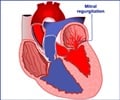Diagnosis
Culture of a pathologic organism is regarded as the “gold standard” for the diagnosis of infective endocarditis.
A suspicion of endocarditis rises when the patient has fever with no obvious source of infection. Most of the signs and symptoms are nonspecific. The doctor tries to elicit the following history from the patient:
- A heart valve disorder
- An artificial heart valve
- Recent history surgical, dental, or medical procedures;
- History of injecting illicit drugs
On auscultation the doctor searches for heart murmur or change in the pre-existing murmur.
The two most important diagnostic modalities are:
Echocardiography: Imaging using ultrasound waves reveal vegetations and other damages to the heart. It is of two types: transthoracic echocardiography and trans-esophageal echocardiography. The latter is more accurate, but invasive and costly. The ultrasound probe is placed on the chest in transthoracic echocardiography. The ultrasound probe is passed down the throat into the esophagus just behind the heart in trans-esophageal echocardiography.
Blood samples: Three or more blood samples taken at different times on the same day. Blood culture helps the doctor to know the type of organism he is dealing with and helps him customise antibiotics.
Culture of a pathologic organism is regarded as the “gold standard” for the diagnosis of infective endocarditis. A number of clinical criteria based on which a diagnosis of IE can be made. The Modified Duke Criteria is the most accepted one.






